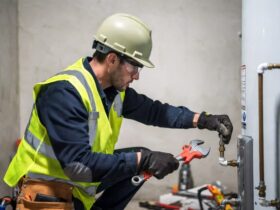No products in the cart.
Homeowner’s Visual Guide to Water Conservation

Water scarcity is one of the biggest issues faced by the world today, and the problem is predicted to grow worse in the years to come. Today, over 700 million people in 43 countries are living with little to no access to freshwater resources. By 2025, this number will have risen to 1.8 billion people.
Fast-forward to 25 years in the future, in 2050, two-thirds of the world’s population will be living in places with water scarcity. Already, 21 out of 37 of the earth’s aquifers are rapidly drying out. If this pace keeps up, the 2050 catastrophe will come much faster to people on earth.
Government agencies and nongovernmental organizations (NGOs) are doubling their water-conservation efforts to stave off water crises. In California, USA, the state government has recently implemented water conservation laws, setting new standards for indoor and outdoor water use and efficiency.
However, unless governments and citizens address the factors that contribute to water scarcity, the act of limiting and regulating water use won’t solve the problem. The world must address the global issues of climate change, water overuse, and increased pollution to stop the dwindling of precious water resources.
Still, initiatives to conserve water are essential to slow down the shrinking of the earth’s freshwater supply. On an individual level, you can do many things to contribute to the effort, starting at your own home.
So how can you help?
Assess how you use water in your household. Identify your habits and the parts of your home that cause water wastage. Determine what you can change to be more water-efficient.
Sometimes, a simple change, like switching to low-flow showerheads and faucets and low-flush macerating toilets, can dramatically increase your water savings.
Most people are not aware of the way they waste water. Educating yourself is the first step. Learn more about how you can contribute to the effort through this water conservation infographic guide for homeowners.















1 Comment